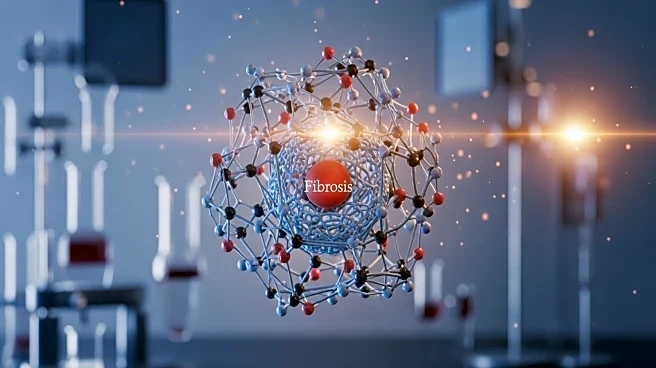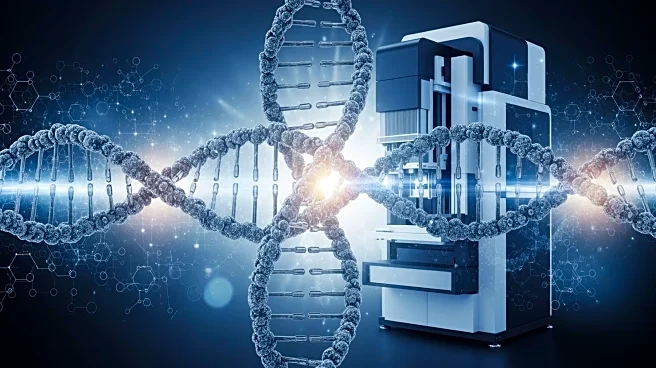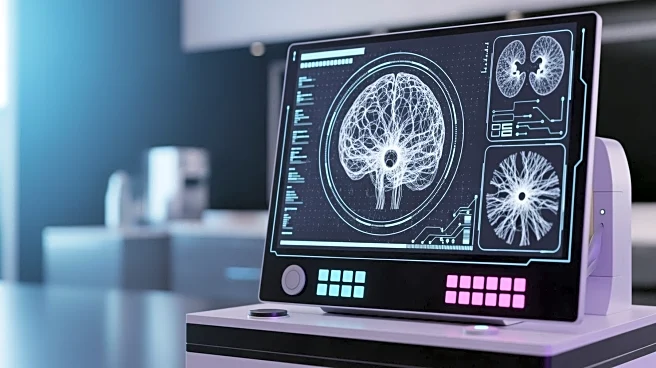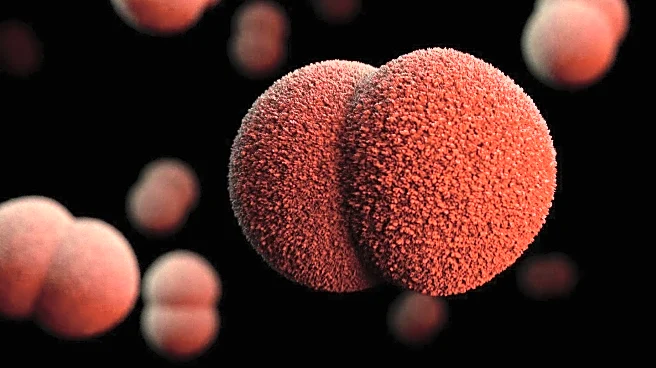What's Happening?
Recent research has made significant strides in understanding the transcriptional profiles of human cells involved in healing and fibrosis. Utilizing spatial transcriptomics with the 10X Visium platform,
scientists have identified distinct transcriptional profiles in human skin and scar tissue. This study highlights the role of mechanoresponsive monocytes and macrophages in driving fibrosis and healing processes. The research involved analyzing human fibrotic liver and co-cultured cells subjected to mechanical strain, revealing increased pro-inflammatory and thrombospondin-expressing cells in fibrotic tissues. Conversely, healthy skin showed decreased inflammation and increased expression of pro-regenerative markers like EGR1. These findings underscore the importance of mechanical stress and mechanotransduction pathways in scar formation and tissue healing.
Why It's Important?
This research is crucial for advancing the understanding of fibrosis and healing in human tissues, which has significant implications for medical treatments and interventions. By identifying the transcriptional profiles associated with healing and fibrosis, scientists can develop targeted therapies to modulate these processes. The study's insights into mechanoresponsive cells could lead to new strategies for reducing fibrosis and promoting tissue regeneration, potentially benefiting patients with chronic wounds or fibrotic diseases. The ability to manipulate mechanical signaling in cells offers a promising avenue for improving healing outcomes and reducing the burden of fibrotic conditions.
What's Next?
Future research may focus on developing pharmacological interventions that target mechanical signaling pathways to enhance healing and reduce fibrosis. Clinical trials could be conducted to test the efficacy of these treatments in patients with fibrotic diseases or chronic wounds. Additionally, further studies might explore the broader applications of these findings in regenerative medicine, potentially leading to breakthroughs in tissue engineering and the development of artificial organs. Collaboration between researchers and healthcare providers will be essential to translate these scientific discoveries into practical medical solutions.
Beyond the Headlines
The ethical implications of manipulating cellular processes for therapeutic purposes must be considered, particularly in terms of safety and long-term effects. As research progresses, regulatory frameworks will need to address the potential risks associated with new treatments targeting mechanical signaling pathways. Moreover, the cultural impact of these advancements could shift public perceptions of medical interventions, emphasizing the role of technology in enhancing human health. Long-term, these developments may contribute to a paradigm shift in how chronic diseases and tissue damage are treated, with a focus on personalized medicine and precision therapies.











